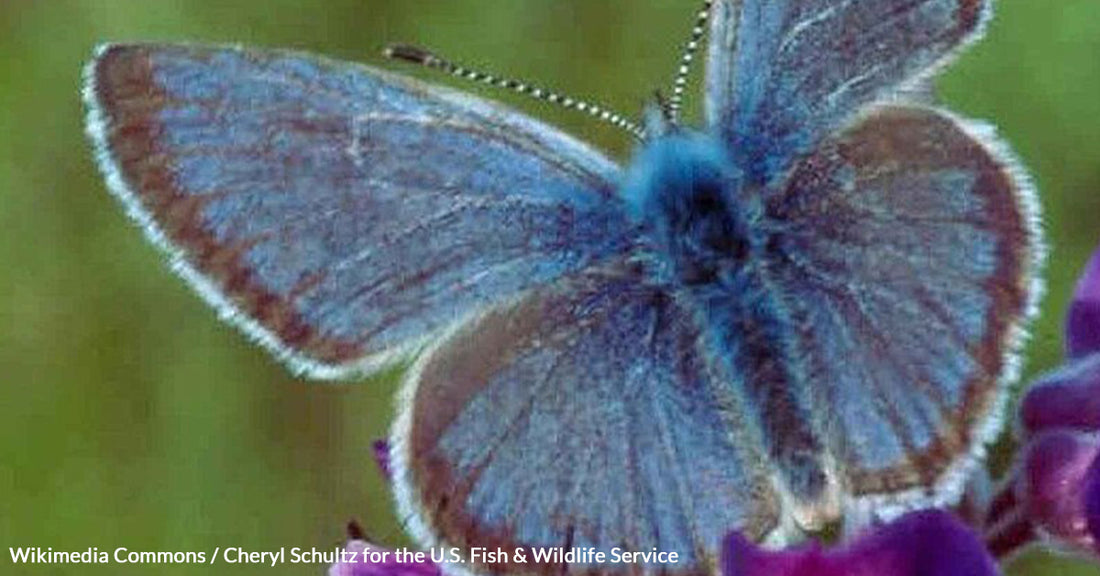Fender’s Blue Butterfly Comeback Brings Hope to Oregon Biodiversity
Matthew Russell
The Fender’s blue butterfly, once on the brink of extinction, has become a beacon of hope in Washington County. Thanks to dedicated conservation efforts and a unique partnership with a local winery, this tiny pollinator is making a significant comeback.
The story of the Fender’s blue butterfly is not just about a species' survival but also about the power of community and cooperation in conservation.

The Struggle for Survival
The Fender’s blue butterfly (Icaricia icarioides fenderi) was first described in 1931 but was thought to be extinct by 1937. Rediscovered in 1989, this butterfly is endemic to the Willamette Valley in Oregon, where it relies on specific prairie habitats and the Kincaid’s lupine plant for survival. The butterfly's lifecycle is closely tied to this plant, with females laying eggs on its leaves, which the larvae feed on upon hatching, Oregon Live reports.
This delicate relationship underscores the butterfly’s dependence on its native habitat, which has been severely impacted by development and fire suppression over the years. By the time it was listed as endangered in 2000, the Fender’s blue butterfly was found at only 32 sites, and its population was rapidly declining.
The transformation of the Willamette Valley’s prairies into agricultural and urban areas left little room for the butterfly’s habitat to thrive, according to the US Fish and Wildlife Service. However, concerted conservation efforts over the past two decades have started to turn the tide for this species.

Conservation efforts have doubled the butterfly’s habitat since 2000.
Conservation Efforts Bear Fruit
A pivotal player in the recovery of the Fender’s blue butterfly has been Van Duzer Vineyards, located in the heart of the Willamette Valley. The vineyard’s commitment to sustainability and conservation has made a significant impact on the butterfly’s habitat.
Since 2009, Van Duzer has worked with the U.S. Fish and Wildlife Service and local conservationists to restore the native prairies. These efforts included controlling invasive species and planting native plants like the Kincaid’s lupine, the US Fish and Wildlife Service reported in a press release.
One innovative method employed by Van Duzer is "flash grazing" with sheep. This practice helps maintain the habitat by controlling vegetation without the need for mechanical mowing. The sheep graze the vegetation, which then fertilizes the ground and supports the growth of native plants. This method has proven beneficial not only for the butterflies but also for other local wildlife, such as the Oregon vesper sparrow and acorn woodpeckers, the USFWS reports.

Van Duzer Vineyards plays a key role in restoring butterfly habitats.
Community and Cooperation
The success of these conservation efforts is a testament to the power of partnerships. Over the years, a diverse group of stakeholders, including private landowners, conservation agencies, and local businesses, has come together to support the Fender’s blue butterfly.
The collaborative approach has been essential in expanding the butterfly’s habitat and population, Oregon Live reports. In Washington County, for instance, a newly discovered population of the butterfly around Hagg Lake has prompted immediate conservation actions.
Efforts such as rerouting trails to protect sensitive habitats and controlling invasive species are underway, demonstrating how local initiatives can contribute to broader conservation goals.

The butterfly’s lifecycle is closely tied to the Kincaid’s lupine plant.
A Beacon of Hope
The reclassification of the Fender’s blue butterfly from endangered to threatened in 2023 is a significant milestone. This change reflects the butterfly’s increased habitat and population, thanks to the ongoing conservation efforts. The butterfly now inhabits twice the acreage it did in 2000, and the number of known occupied sites has quadrupled, according to the USFWS.
The story of the Fender’s blue butterfly is more than just a conservation success; it’s a symbol of hope and resilience. It shows that with dedication, cooperation, and innovative approaches, it is possible to reverse the decline of endangered species.
For the residents of Washington County and beyond, the sight of these delicate blue butterflies fluttering among native plants is a reminder of what can be achieved when communities come together for a common cause.

Fire suppression and development have significantly impacted its native habitat.
Looking Ahead
While the conservation story of the Fender’s blue butterfly is far from over, the progress made so far is encouraging. Continued efforts to maintain and restore prairie habitats will be crucial for the butterfly’s long-term survival.
The partnerships that have been formed and the innovative methods being used serve as a model for other conservation projects. For visitors to Van Duzer Vineyards, the sight of the Fender’s blue butterfly is a powerful symbol of hope and renewal.
As Bruce Sonnen, the vineyard manager, told the USFWS, “The flight pattern of the Fender’s butterfly consists of a very limited time window… but when you see them, it’s a sight to behold.”
This transformation from near extinction to recovery is a testament to what can be achieved through community effort and dedication. Click below to take action for rare butterflies.

